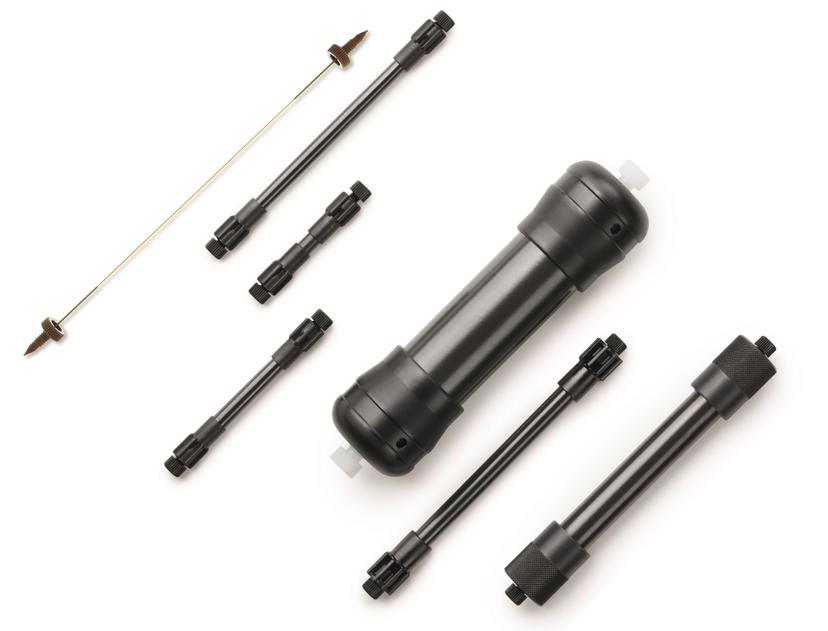Tips and Tricks for LC-MS
Improve your analytical accuracy, minimize instrument downtime and extend the life of your LC-MS system
26 Oct 2015

Tips and tricks for LC-MS
Optimization of your LC-MS system and workflow is critical to ensure minimal instrument downtime and troubleshooting. While sample preparation is often prioritized when looking to streamline LC-MS workflow, the operation of your instrument is just as important to improve data quality and extend its life. LC-MS systems can be expensive and time-consuming to maintain, but are able to sensitively analyze complex samples and detect very similar compounds. Therefore, it is crucial that your LC-MS is running as efficiently as possible to ensure the benefits of LC-MS analysis are maximized.
SelectScience spoke to Hans Griesinger, Analytical R&D Engineer, Merck KGaA, and discussed tips and tricks to optimize the coupling of liquid chromatography with mass spectrometry. You can watch this webinar presentation on-demand, or read the highlights of the Q&A session.
1. Optimizing your eluent and buffer pH
Your choice of buffer strongly depends on your application, and it must match the characteristics of the stationary phase. In particular, the pH can impact selectivity, peak shape and retention, but for nonpolar or neutral compounds, this impact is fairly insignificant. Where analytes are ionizable, they have better retention in their ion-suppressed form, so knowing the pKa of the analytes is very helpful in selecting the mobile phase and buffers and optimizing their pHs. For example, a buffer is effective at ± one pH unit from the pK of the buffering ion.
2. Optimizing your mobile phase
Everyone knows to use HPLC-grade solvents in their chromatographic runs − higher quality solvents will produce less interference with the analyte peaks. However, there are many organic solvents available, such as acetonitrile, methanol or water, and many considerations when choosing your solvent. For example, bottled chromatography water, while having the highest purity, is unpractical for applications with high water consumption, which are better served by ultrapure water from a water purification system. Hypergrade solvents will produce the most interference-free spectra, but will also cost more than lower quality gradient and isocratic grade solvents.
3. Determining the most favorable eluent composition
The composition of your eluent is crucial to having sensitive and accurate results, and the proportion of water can have a big impact. For example, at lower levels, less than 5%, the buffer can precipitate, necessitating the use of suitable organic solvents. At water levels above 80%, the electrospray can break down and there can be some microbial contamination. However, decreasing the flow rate and eluent surface tension, as well as regular flushing of the LC column with an organic solvent, can overcome these issues.
4. To store, or not to store – and how?
Storing your solvent can be unavoidable, but different containers will have different effects on the sample. Using suitable caps and adapters directly mounted to the brown glass to avoid contaminating or leakage and if possible, avoid decanting the solvent out of their original brown bottle – this can also introduce contaminants, and the surface treated amber glass of the original packaging is best for protecting your solvent from the effects of UV. If you must remove your solvent from its original container, use borosilicate glass if possible, as it is exceptionally secure with high thermal stability. With standard clear glass bottles, dissolution of silica and alkalis is possible. Finally, never use homemade solutions − the quality and composition cannot be guaranteed and introduces unneeded uncertainties.
5. Cleaning your sample storage
Contamination of your eluent through less-than-clean vessels that you have washed is an often unappreciated factor in the quality of your solvents or buffers. Dishwashers may be the standard method, but detergent residues and compounds leached from the detergent bottles can make their way into your eluents from their newly washed container. Where possible, leave your solvents in their original containers and avoid reusing containers.
6. Selecting your ESI mode - positive or negative?
When seeking to optimize your LC-MS workflow, an important consideration in the mass spectrometry development is to select positive or negative electrospray ionization (ESI). In the positive ion mode, protonated and/or alkali adduct analyte molecules are generally observed, whereas the negative ion mode features peaks corresponding to deprotonated analyte molecules. Positive ESI is more common and often found to be more sensitive than negative ESI. However, it is also unsuitable for strong acids, such as HCl and HNO3, and strongly polar substances.
Missed the webinar? You can watch it on-demand, or read the highlights of the Q&A session.
